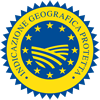Description
The Brioche Vendéenne PGI is a confectionery made from a mixture rich in eggs and sugar.
Production Area
The Brioche Vendéenne PGI production area falls in the departments of Vendée and in the neighbouring regions, in the south of the Western Loire and Maine-et-Loire departments, and in the Plaine and Marais areas and the Deux-Sèvres and Charente-Maritime departments in the Pays-dela-Loire and Poitou-Charentes regions.
Production Method
The mix is made with flour, fresh eggs, butter, sugar, yeast, alcohol, salt, water or milk and flavourings the use of which is optional. The product is processed and undergoes a lengthy rising time called pousse, or rather growth. The rising phase can be carried out in two ways: pousse directe, the duration of which is a minimum of four hours at room temperature, or pousse dirige, in which the fermentation is carried out at a low temperature for a maximum of 24 hours. Brioche Vendéenne PGI is kneaded by hand to form a braid, then brushed with egg yolk and baked. The baking phase is carried out in "tunnel" or "multi-deck" ovens only, revolving or fan ovens cannot be used. The baking takes place at a low temperature for 20 to 45
Appearance and Flavour
Brioche Vendéenne PGI has a golden colour and is characterized by a typical braided shape, which may be round, oval or elongated. The pastry inside, where holes are present due to the rising process, has a typical uniform yellow colour with a yeasty aroma. The minimum weight is about 300 gr and the flavour is typically that of the mixture's basic ingredients, and the aroma is balanced between the butter, alcohol and the mixture of vanilla and orange blossom.
History
Originally the Brioche Vendéenne PGI began as a traditional Easter dessert known as brioche pacaude and as a wedding dessert. The high sugar content that characterizes the product was initially linked to the need to eat sweet foods after a winter of deprivation, based on a gray bread diet. Over time the household production turned into an artisanal production and then an industrial production, thereby passing down this culinary tradition. The fame and reputation of the Brioche Vendéenne PGI have increased thanks to the dispatch of the product to the capital, the increasing flow of tourists in Vendée driven by the advertising of the local craftsmen and the development of a dynamic bakery-pastry industry with national circulation. Gastronomy
Gastronomy
The entire Brioche Vendéenne PGI must be consumed within 21 days, within 19 days if cut, and within five if they are larger specially prepared brioches. For better conservation it should be kept in a dry place and away from the sun. Brioche de Vendéenne PGI is usually eaten on its own, with added butter or jam, or with chocolate for those with a sweeter tooth. It can also be eaten for breakfast, soaked in milk and coffee or as a dessert to accompany a cream dessert or a snack at tea time.
Marketing
The product is sold as Brioche Vendéenne PGI. It is marketed in transparent bags that are sealed to ensure its freshness, along with specific labelling. The product is marketed fresh, whole or in pieces and always in paper for food products.
Distinctive Features
The Brioche Vendéenne PGI is characterized by its particular consistency and flavour due to the length of the rising process and the two processing phases, namely pointage, necessary for the development of the product's specific aromas and the apprêt, during which the production of carbon dioxide favours the formation of dough with an airy consistency.





